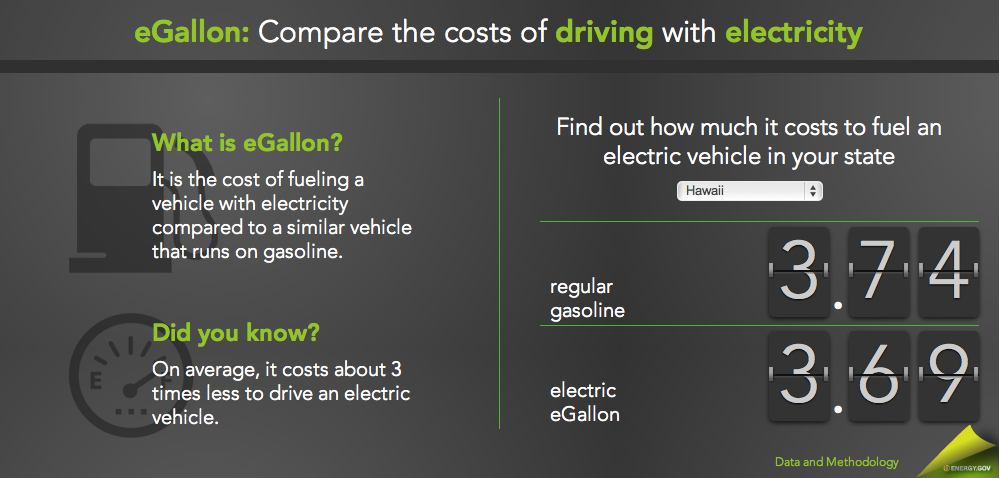Earlier this month, U.S. Department of Energy launched a website that calculates “the cost of fueling a vehicle with electricity compared to a similar vehicle that runs on gasoline”.
The mission of this gadget is to encourage consumers to switch to electric cars by:
• bringing greater transparency to vehicle operating costs
• helping drivers determine how much they might save on fuel by choosing an electric vehicle (EV)
• showing the low and steady price of fueling with electricity.
Announcing the launch of the website, the new Secretary of Energy, Ernest Moniz, stated that EVs could not only save consumers on fuel, but also reduce the dependence of our nation on oil. Those goals may be harder to achieve in Hawai’i than in the rest of the nation.
First, according to the eGallon website, while it costs the average driver in the US less than a third to drive an EV than a conventional gasoline vehicle (saving them more than 68% on fuel cost*), Hawai‘i residents save only 5 cents per gallon on gasoline (less than 1.5%). That explains why the first goal (saving consumers on fuel costs) is harder to achieve in Hawai‘i.
Second, while less than 1% of US electricity is generated from oil, Hawai‘i currently generates 75% of its electricity from oil. This explains why the second goal (reducing dependency on oil) is harder to achieve through EVs in Hawai‘i.
Finally, an often-quoted goal of increased EV penetration is to lower greenhouse gas (GHG) emissions from the transportation sector—as the largest and fastest growing component of state GHG emissions. Achieving that goal is also currently easier in the rest of the nation where more than 40% of electricity comes from cleaner sources than oil and coal (i.e. renewables, nuclear, and natural gas).
Therefore, both of the objectives mentioned by the US Energy Secretary are harder to achieve in Hawai‘i, unless consumers charge their vehicles themselves, for example using their own rooftop PV systems. That way, they could save more on vehicle fuel costs and help the State reduce their reliance on oil.

– Iman Nasseri and Kimberly Burnett
*It is worth mentioning that both this website and much of the media tend to examine “pump prices” for passenger cars. Although EVs show a lot of promise in much of the US in terms of fuel cost per miles compared with gasoline and other alternative-fueled vehicles, considering the higher capital cost of EVs than their similar class conventional gasoline vehicles (Please refer to section 2.8 of Transitions to Alternative Vehicles and Fuels), they may not look as promising in terms of overall cost per mile.



